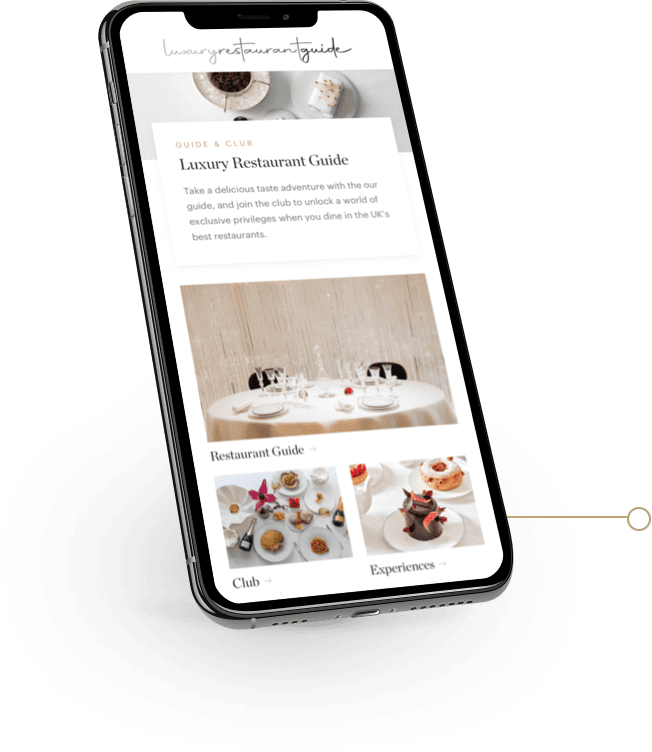Awards, Restaurant news
Michelin Guide 2012 announcements are out
News
Design Restaurants free iPhone App has arrived
What makes a successful restaurant – by 5 design houses
A recipe for successful dining
Food and service are usually the ingredients focused on but here we show the other element of where design is used to aid atmosphere and create an environment that you are inspired to dine within. For an article for FX Magazine, 5 leading designers were asked what goes into making a successful restaurant. Here we extract pertinent points to help you rate your favourites.
SHH: Creative Director, Neil Hogan
Realising that design isn’t everything
Design is an ingredient, while the operator holds the full recipe
Creating a great ‘shop window’
The external aspect is an invitation. Restaurants should have a clear and distinct appeal in the context of their location and local competition.
Atmosphere and sensory appeal
How you are greeted is paramount – both by staff and by the sights, sounds and smells you encounter. Great spatial layout and a clear journey to your table count, as do sight lines as you walk through, plus appropriate colour, furniture and lighting design.
Material choice and comfort
Zones, table height and can you people watch. Screens and mirrors can add clarity or mystery. Material quality is now vital and should add richness, depth and above all comfort.
Tantalising toilets
Should always be an easy, straightforward and high quality experience.
B3 Designers: Designer Director, Mark Bithrey
Ergonomics
Sound balance is essential in the design of a restaurant. Too many hard surfaces amplify noise. Alternatively, if it’s is too quiet the space becomes intimidating and sterile. Table spacing balance is key.
Identity
The impression that the identity needs to leave is one that a customer would want to return to and also tell their friends about.
Lighting
All restaurants have two lighting schemes – day and night. Best to use the most sophisticated dimmer system the budget allows. We always ensure there is lots of lighting dotted around the restaurant so we can create various moods.
Materials
Customers are very design aware. Success lies in the originality of merging in new ways or putting a twist on a material and where it is used.
Manipulation of space
How we choose to break a space up is important to creating an overall holistic journey. Creating main features and focal points can achieve this.
Mackenzie Wheeler: Partner, Rupert Wheeler
Strong and distinctive philosophy
A distinctive philosophy is needed to guide the entire venture and should, of course, be led by the menu and the host. Without it it become pointless decoration.
Entertainment value
We eat out for entertainment so the venue must recognise that. Like a theatre, the space should have a focus, a sense of drama, anticipation, appropriate lighting and comfort, and a very efficient flow of staff, performers, guests and audience.
Plenty of spirit
The interior should have a generosity if spirit because this is the real crux of effective hospitality. From choice of chairs, upholstery, lighting, space, table size, views cutlery, crockery etc.
Great seating
Every table should be a nice table to sit at. No one should be looking past their dining partner at a blank wall or seated at an isolated table. Everyone should be part of the environment so that a real sense of community can be generated.
A well balanced environment
Nothing is so uncomfortable as not being able to hear your dining partner while sitting in a draft near the front door on a hard chair with no back support – all because the designer was after some pointless attempt at minimalism.
Interior Desires: Founder and creative director, Rebecca James
Entrance
The entrance is where you make or break an impression to the customer. With a small space you need to create a Pandora’s box, with a larger space, be careful not to scare the customer away by making it feel too grand.
Wow factor
It needs some wow factor to draw customers in, whether its design for high end or lower end restaurants. Every aspect of the space needs to work.
Branding
It is so important that customers can engage with the restaurant they are in and remember it through its own brand identity.
Eye-catching
From a design point of view a simple way to gain balance is to use architectural structure for the front of house because bars of today need to be eye-catching from the outside.
Temperature
Temperature-wise there is nothing worse than sitting down for a meal or a drink and feeling too cold or hot. You need to find the right concept for the client and how it will fit into the area.
Philip Watts Design: Founder, Philip Watts
Sell the restaurant through the design
It is the restaurant designer’s job to do anything other than sell the food. You must create a narrative and a context for the restaurant’s offer.
Ask questions and investigate
Understand what you are selling. Agree four cornerstones of the offer and write them down. Go to the places where the customers go – eat at all your client’s rivals.
Fight your corner
Dividing up budgets between designer, chefs and operations can be difficult but remember visiting a restaurant is about experience and atmosphere.
Budget
Interior design is like cooking – it is always the sum of the individual ingredients you put in that creates the finished dish.
Client
The design scheme is only ever as good as the client. It will be their vision and concept you bring to life.
To read the full article click here.






